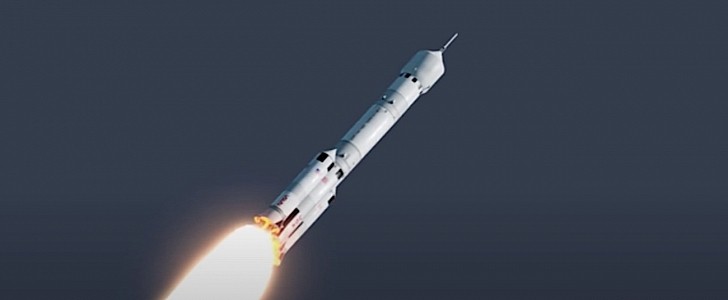Today more than ever, humanity is determined to go to the Moon and remain there. Despite the problems engineers are encountering with the Space Launch System (SLS) now on the pad, the rocket will eventually take off, kickstarting the Artemis program that will put humanity in a position to expand into neighboring space.
But all of that could have happened a lot sooner, had some earlier plans come to pass. Back in the 1990s, for instance, the American space agency devised something called the Space Exploration Initiative (SEI).
SEI included something called the First Lunar Outpost, a program meant to launch a crew to the Moon in the 2010s, partially with the purpose of establishing a habitat there. The rocket meant to launch the program into space came to be known as the Comet.
Comet was to be a super heavy-lift launch vehicle (SHLLV), loosely based on the Saturn V that placed Americans on the Moon during the Apollo program of the 1960s and 1970s. It, of course, was to employ new engines, larger fuel tanks, and, unlike the Saturn, side boosters.
The proposed specs of the Comet said it would be capable of carrying into trans-lunar injection orbit two times the weight Saturn V was capable of carrying. Furthermore, later variants, potentially nuclear-powered, were supposed to be able to launch humans all the way to Mars.
Like a lot of other big plans from whatever field of human activity, a series of factors conspired to kill the SEI, and with it the First Lunar Outpost and the Comet. That means we never got to see it fly, let alone achieve what it was designed to achieve.
Now, thanks to an animation specialist called Hazegrayart, the Comet comes to life, even if for just five minutes or so, to shed light on a past that never was. Enjoy it below.
SEI included something called the First Lunar Outpost, a program meant to launch a crew to the Moon in the 2010s, partially with the purpose of establishing a habitat there. The rocket meant to launch the program into space came to be known as the Comet.
Comet was to be a super heavy-lift launch vehicle (SHLLV), loosely based on the Saturn V that placed Americans on the Moon during the Apollo program of the 1960s and 1970s. It, of course, was to employ new engines, larger fuel tanks, and, unlike the Saturn, side boosters.
The proposed specs of the Comet said it would be capable of carrying into trans-lunar injection orbit two times the weight Saturn V was capable of carrying. Furthermore, later variants, potentially nuclear-powered, were supposed to be able to launch humans all the way to Mars.
Like a lot of other big plans from whatever field of human activity, a series of factors conspired to kill the SEI, and with it the First Lunar Outpost and the Comet. That means we never got to see it fly, let alone achieve what it was designed to achieve.
Now, thanks to an animation specialist called Hazegrayart, the Comet comes to life, even if for just five minutes or so, to shed light on a past that never was. Enjoy it below.












